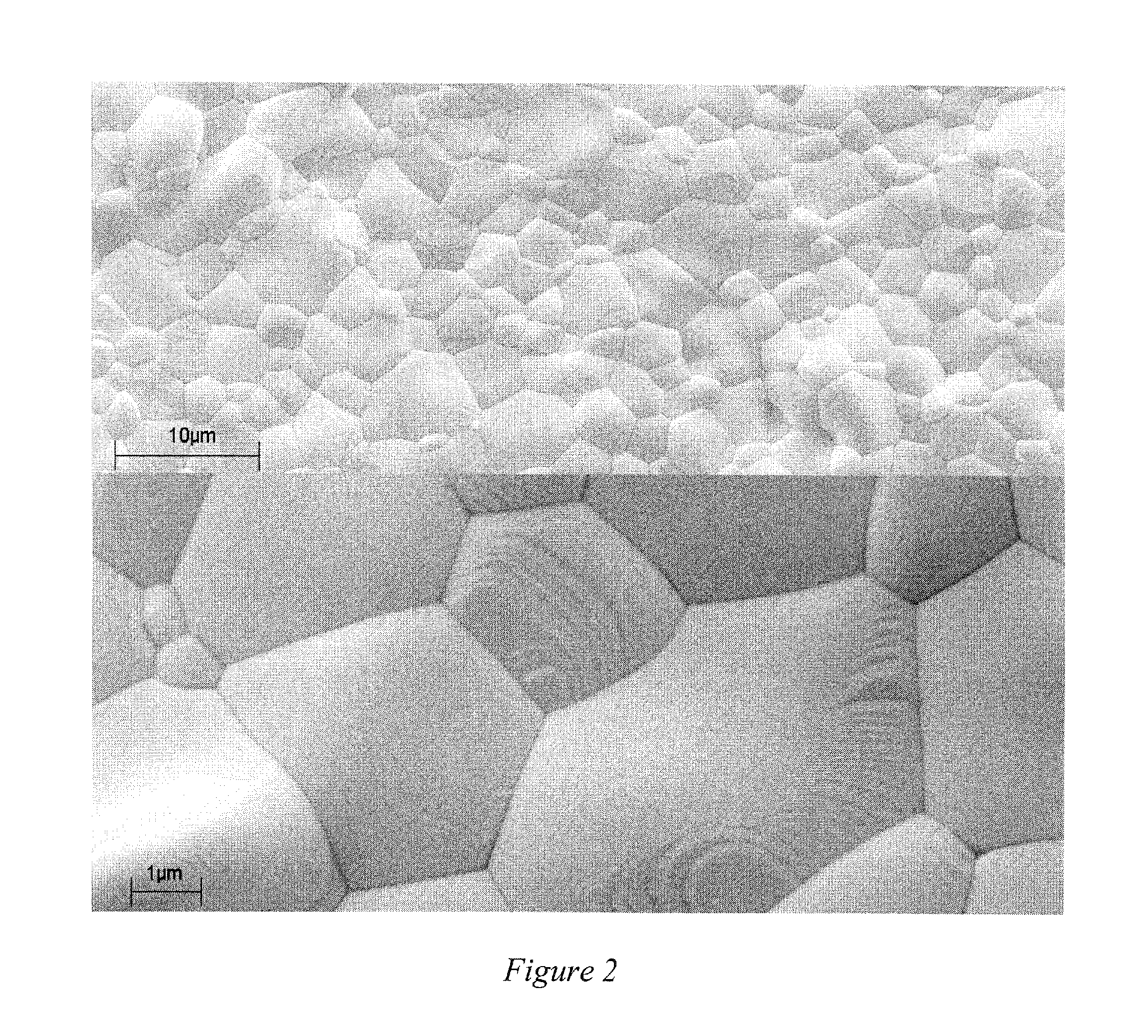Fabrication of dual structure ceramics by a single step process
a technology fabrication steps, which is applied in the field of fabrication of dual structure ceramics by a single step process, can solve the problems of high cost of materials, damage to ceramic coatings, and often observed macroscopic flaws in ceramic struts commercially available cellular ceramics, and achieves simple thermal treatment, simple fabrication steps, and avoid complex and expensive design.
- Summary
- Abstract
- Description
- Claims
- Application Information
AI Technical Summary
Benefits of technology
Problems solved by technology
Method used
Image
Examples
example 1
[0036]A ceramic charged polyurethane system was in-situ polymerized on a flat semi-rigid polymeric surface at room temperature. In a first step, 2.25 g of GDC powder was dispersed in 0.8 mL of poly(methylene diisocyanate) then an addition of 0.4 mL of poly(ethylene glycol), 0.1 mL of polyoxyethylene sorbitan monooleate, 1 mg of 1,4-diazabicyclooctane, and 10 μL of water was combined with mechanical stirring. A subsequent thermal treatment consisted of the following: a temperature ramp of 1° C. per minute to 600° C., to complete formation and to burn out the polyurethane, a temperature ramp of 2° C. per minute, until 1550° C., a 4 hours dwell at 1550° C. to form the sintered ceramic structure, and a cooling ramp of −2° C. per minute to room temperature. The resulting dual structure ceramic object exhibited an upper dense surface layer without cracks. The dense surface layer was impervious to gasses. FIG. 1 show reproductions of a cut cross-section revealing the dense structure of the...
PUM
| Property | Measurement | Unit |
|---|---|---|
| temperature | aaaaa | aaaaa |
| temperature | aaaaa | aaaaa |
| time | aaaaa | aaaaa |
Abstract
Description
Claims
Application Information
 Login to View More
Login to View More - R&D
- Intellectual Property
- Life Sciences
- Materials
- Tech Scout
- Unparalleled Data Quality
- Higher Quality Content
- 60% Fewer Hallucinations
Browse by: Latest US Patents, China's latest patents, Technical Efficacy Thesaurus, Application Domain, Technology Topic, Popular Technical Reports.
© 2025 PatSnap. All rights reserved.Legal|Privacy policy|Modern Slavery Act Transparency Statement|Sitemap|About US| Contact US: help@patsnap.com



